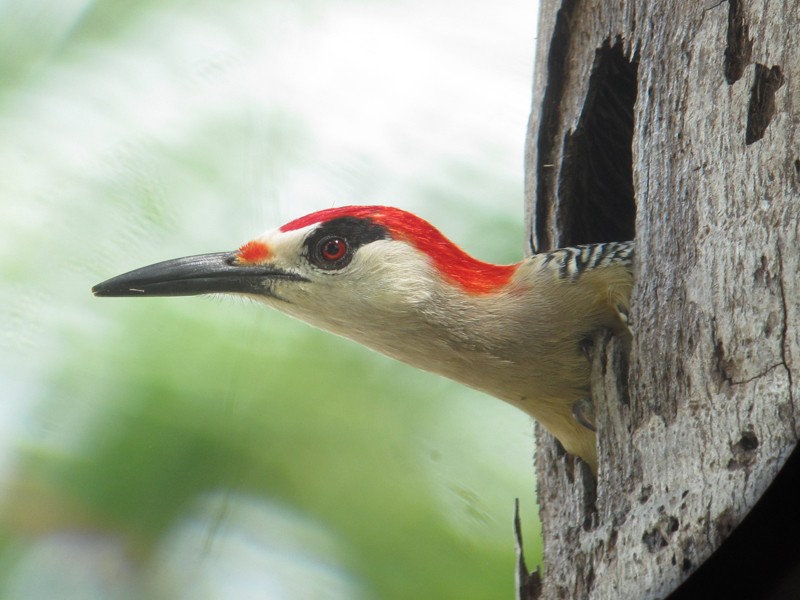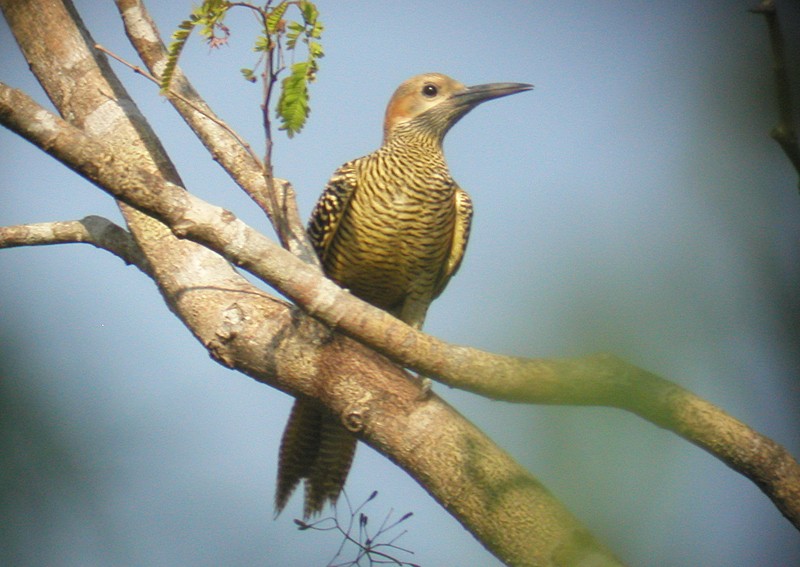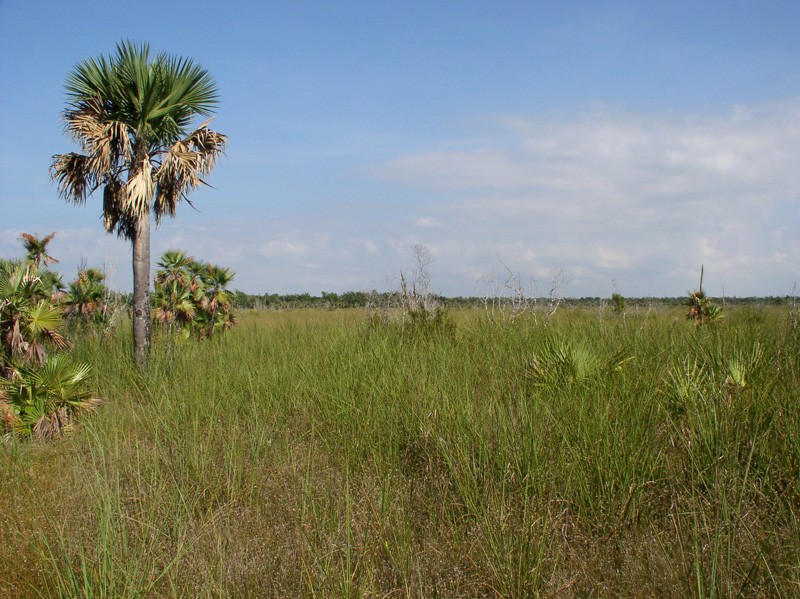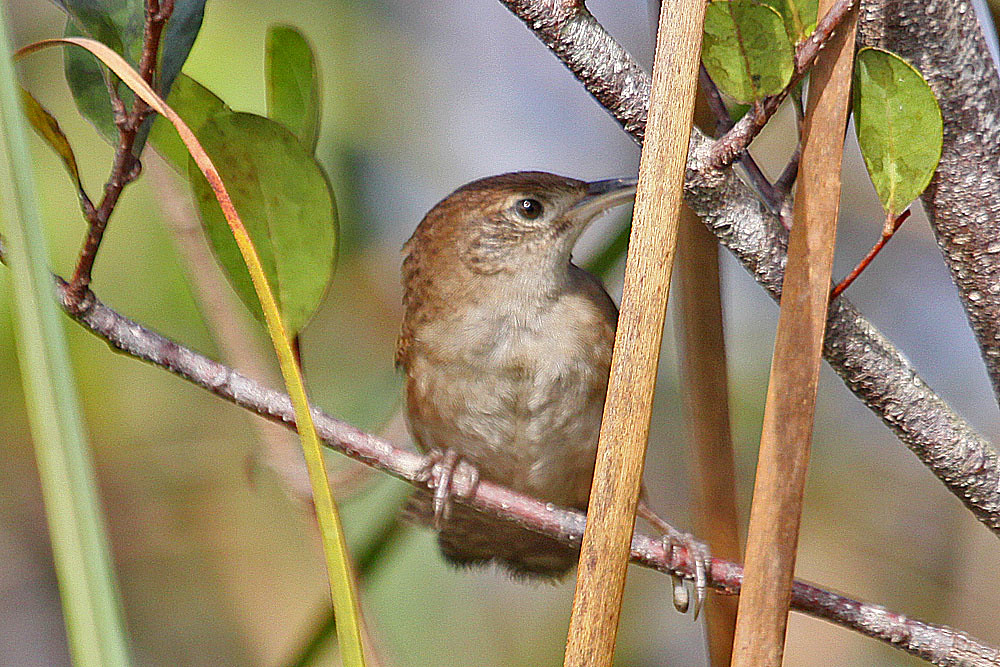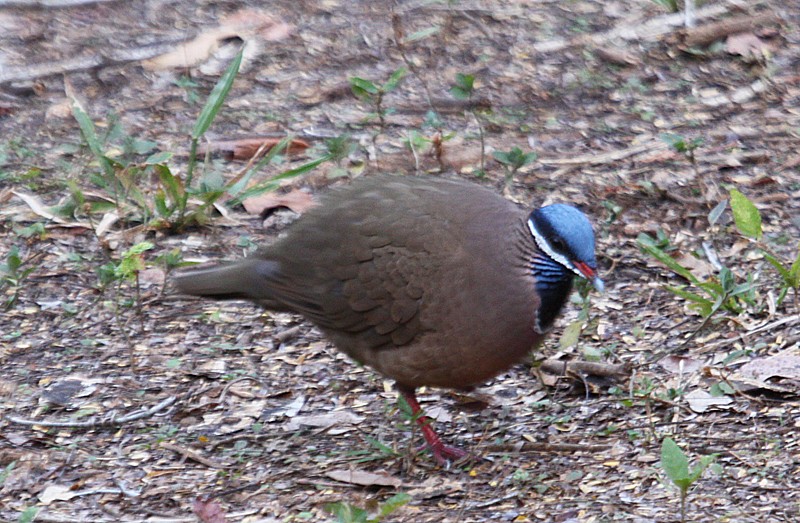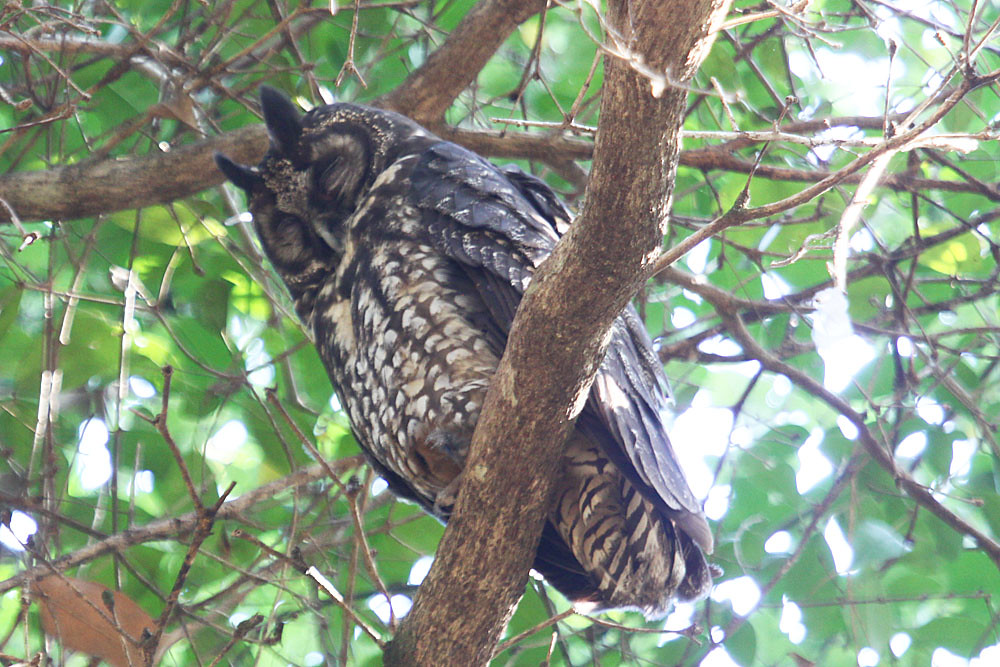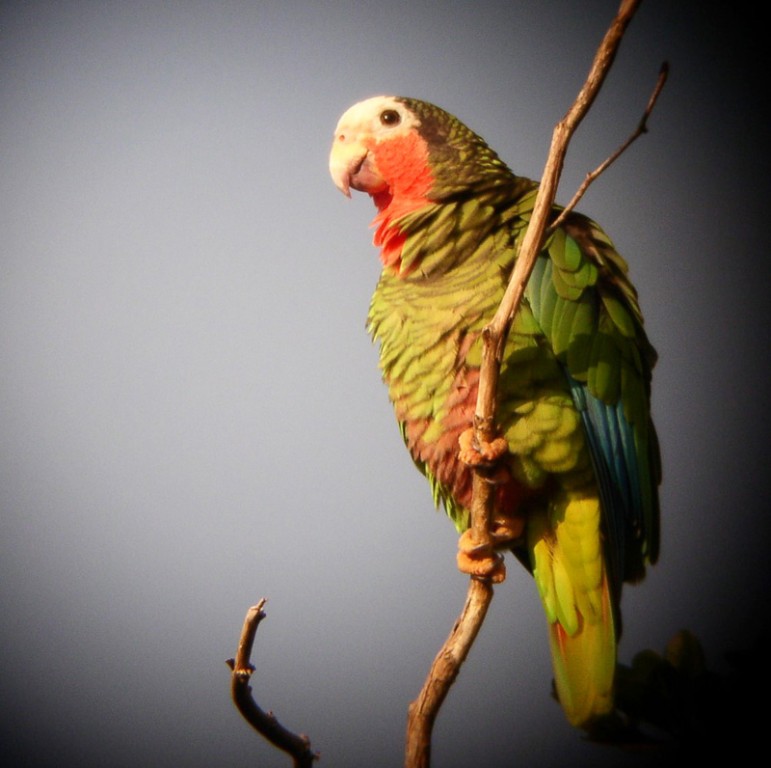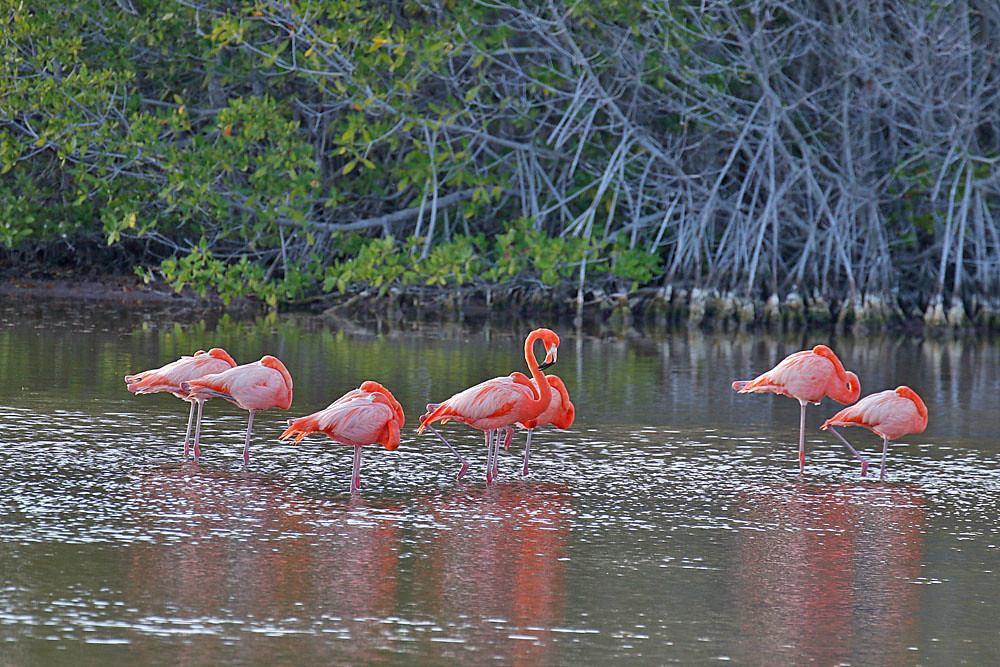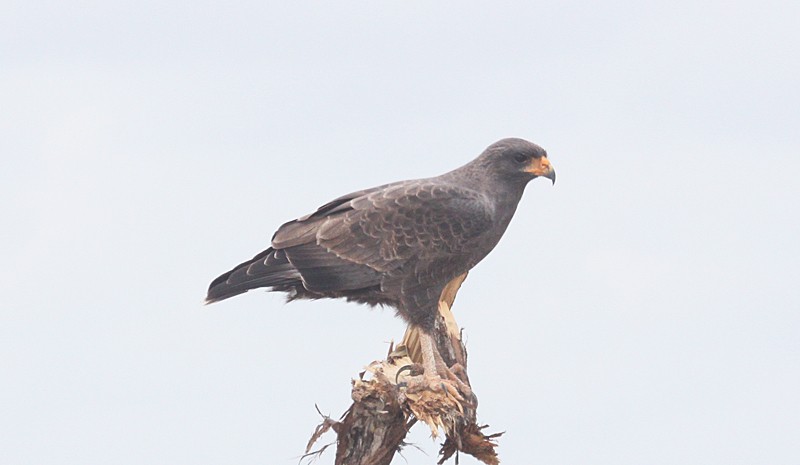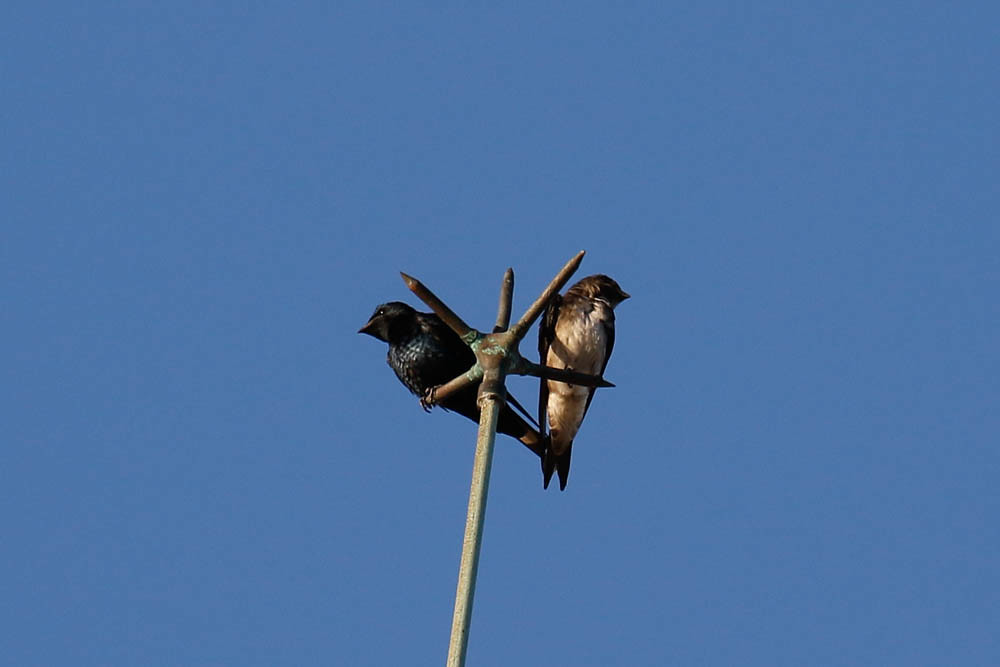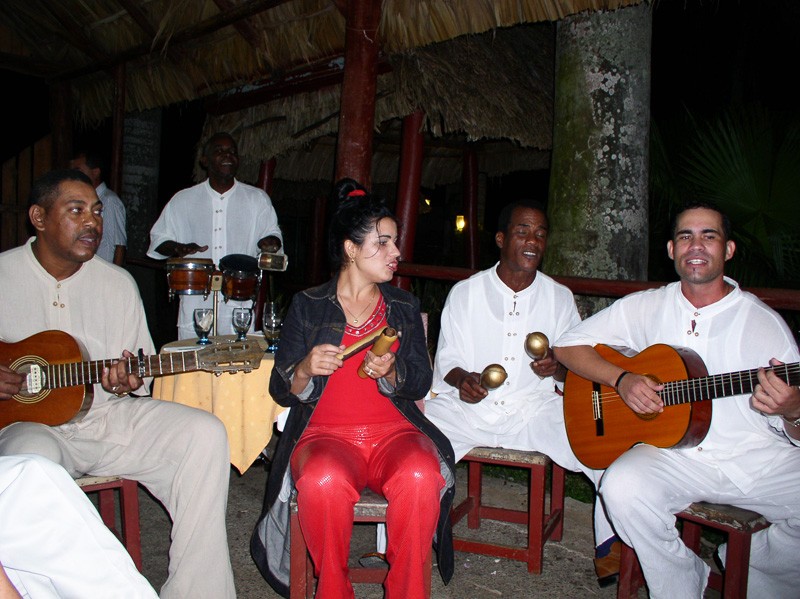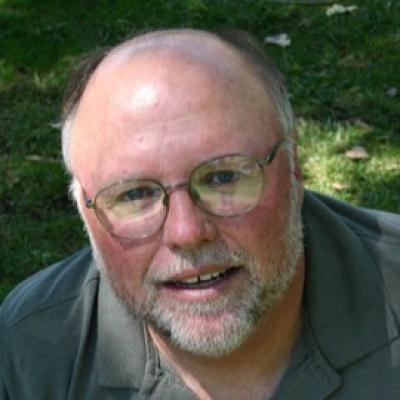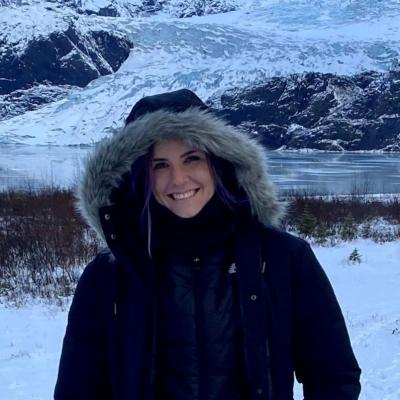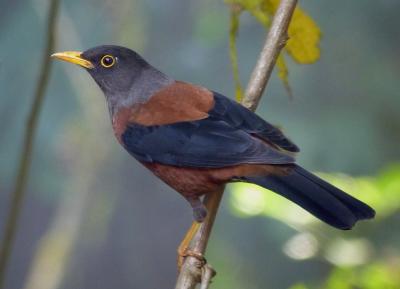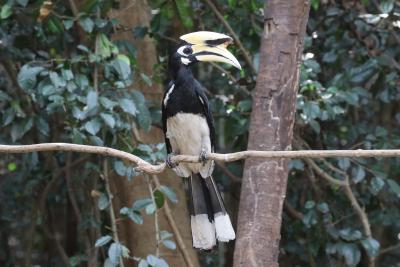Cuba
2026 Tour Price to be Determined
2026 Tour Price to be Determined
Cuba, the largest of the Greater Antilles with over 42,000 square miles, lies as close as only 93 miles south of Florida. It’s been largely inaccessible to Americans since the Batista government fell at the end of 1958 and Fidel Castro assumed control, but over time, and especially over the last decade, the rules have relaxed from both the Cuban and U.S. governments, and Americans can once again visit, albeit with some restrictions. The recent restrictions that were reinstituted do not have much effect on our tour program. As in so many other parts of the world, the habitats of Cuba were severely affected by logging and other activities in the late 19th and early 20th centuries; in Cuba’s case, trees were felled to expand the sugarcane industry. As with most areas, the environmental damage was worst in the lowlands. Despite this, Cuba has an impressive series of national parks and preserves and the government takes conservation issues quite seriously.
Cuba has 30 endemic birds, only one of which is definitely extinct, the Cuban Macaw (since 1864), and the Zapata Rail and the Cuban Kite haven’t been definitively documented for nearly or century, or longer. The Cuban Nightjar (Antrostomus cubanensis) was recently split from the Hispaniolan Nightjar (A. ekmani) and the Cuban Bullfinch (Tiaris nigra) is now considered monotypic after the Grand Cayman Bullfinch (T. taylori) was split as its own species. And in 2023, the Cuban Palm-Crow (Corvus minutus) was split from the Hispaniolan Palm-Crow (Corvus palmarum). We should see over 20 and possibly as many as 27. Also the endemic subspecies of Eastern Meadowlark (hippocrepis) with its very distinctive song likely merits full species status. Over 20 other species are endemic to the Caribbean region, mostly from the Greater Antilles or from the Bahamas, and we will likely see nearly all of them. Many of them represent endemic Cuban subspecies. and the four resident American Kestrels in the West Indies (subspecies sparverioides in Cuba) likely represent a different species from mainland birds. The summer breeders, including the endemic breeding Cuban Martin, will have arrived by late March and many North American birds, notably warblers, will still be here on their winter grounds.
Cuba has long been catering to European and Canadian tourists and has a good infrastructure of roads and hotels. Historic Camagüey, restored to the Spanish colonial period, is worth seeing by itself, and we’ll spend part of the final afternoon touring the city by bicycle taxi. Finally, Cuba has long cherished its distinctive and fine musical heritage. We will be serenaded at meals by some of the best musicians in the country.
Day 1: Our tour will start in the morning at the Miami airport, followed by an early afternoon flight to Havana.** After clearing immigration and customs, we’ll be met by our Cuban naturalist & guide and ground staff, and will then head west to Soroa, just over an hour away.
We will head first to near the botanical gardens where we might see a number of endemic or near-endemic species including Cuban Pygmy-Owl, Cuban Trogon (Cuba’s national bird), West Indian and Cuban Green Woodpeckers, Cuban Tody, Loggerhead Kingbird, Cuban Pewee, Cuban Bullfinch and Cuban and Tawny-shouldered Blackbirds, along with a variety of West Indian species, such as Western Spindalis (endemic green backed subspecies, pretrei) and wintering North American warblers including possibly Louisiana Waterthrush. We’ll scrutinize the White-crowned Pigeons with special care, looking for the beautiful Scaly-naped Pigeon, a West Indian endemic. Gray Kingbirds and Black-whiskered Vireos, both summer breeders, will have arrived. After dinner we’ll offer evening birding, searching in particular for the endemic Bare-legged Owl. In 2023 Luis found a roosting Wood Thrush, a rarity in Cuba. Night in Soroa.
Day 2: This morning we’ll depart west to Pinar del Rio province for Cueva de las Portales in the Sierra de los Organos of La Guira National Park, known as Che Guevara’s hideout during the October 1962 Cuban Missile Crisis. Here in the trees among the limestone karst formations we’ll be looking particularly for the endemic Cuban Solitaire, whose somber appearance is more than made up for by its remarkable jangling song. We should see both White-winged and Zenaida Doves and will look again for Scaly-naped Pigeon. Amongst the Cave Swallows we’ll look for our first Cuban Martins. The birding and scenery here is excellent and we have a good chance for Cuban Bullfinch and a decent chance for Gundlach’s Hawk, which seems to be always an elusive Cuban endemic to find. Others we might see include Smooth-billed Ani and perhaps Purple Gallinule. Tawny-shouldered and Cuban blackbirds and Red-legged Honeycreepers should be numerous and we’ll search carefully for Olive-capped Warbler, a local species in Cuba and otherwise known only from the northern Bahamas (Abaco and Grand Bahama). The distinctive polymorphic “Cuban Kestrel” (currently treated as a subspecies of American Kestrel) is found in this area. It acts more like a Merlin and doesn’t bob its tail as mainland birds do. Cuba has almost as many endemic Anolis lizards as it does birds. Some of them are large and colorful, and here we might see Western Giant, Stream, and Cliff Anoles. Night in Soroa.
Day 3: This morning we’ll bird near Soroa looking for another distinctive Cuban endemic, Fernandina’s Flicker and then continue on to Las Terrezas, a community established by the French fleeing Haiti in the late 18th century. We’ll be looking for anything we may have missed yesterday, notably Scaly-naped Pigeon. A nearby pig farm attracts many grassquits, mostly Yellow-faced but also a number of the attractive and endemic Cuban Grassquits. Recently, a pair of Stygian Owls (endemic siguapa subspecies) have been present in a pine plantation in town. After lunch at a hilltop restaurant in the old coffee plantation, we’ll retrace our steps past Havana and then turn south to the Zapata Peninsula, home to the largest wetland in the Caribbean. We’ll make a few stops at two inland reservoirs where we should see some lingering wintering ducks and perhaps a Snail Kite. Late in the afternoon we’ll arrive at Playa Larga near the Zapata Swamp and the site of the infamous April 1961 Bay of Pigs invasion. On our guesthouse grounds before sunset we might see Cuban Parrot or a Cuban Crow, the latter possessed of a remarkable, almost comical vocabulary. Night at Playa Larga.
Days 4–5: We’ll bird the vast Zapata Swamp for two days. On one morning we’ll visit Bermejas, where with excellent luck we could see all four species of Cuban quail-dove, including two handsome endemics, Gray-fronted and Blue-headed. Key West Quail-Dove is sometimes present, and there is at least a chance of seeing Ruddy Quail-Dove, although most encounters involve only brief flight views. Other endemic species here include Cuban Parakeet, Cuban Pygmy and Bare-legged Owls, Cuban Vireo, Yellow-headed Warbler, Cuban Oriole, and the diminutive Bee Hummingbird, the smallest bird in the world. We often find Great Lizard Cuckoo, Western Spindalis, and Shiny Cowbird along with a fine variety of North American wintering wood warblers. On some occasions a roosting Stygian Owl can be located, and elsewhere in the area we should find Limpkin and perhaps the endemic chrysocaulosus subspecies of Northern Flicker, which lacks a white rump. The endemic Red-shouldered Blackbird is also possible.
We’ll arise before dawn one morning (and/or at dusk) to see if we can locate the Cuban Nightjar near Playa Larga at Sopillar. Once it gets light, we’ll try to find what will probably be one of our most difficult Cuban endemics, the distinctive (especially on vocalizations) Zapata Wren. We have a good chance of seeing the endemic Zapata Sparrow (inexpectata, the most colorful of three subspecies), and with great good fortune might see a Spotted Rail. The endemic Zapata Rail is or was found here too, but it has reached near mythical status with essentially no confirmed records for many decades (the last specimen was in May of 1934 and it has never been photographed in life). Later we’ll visit Salinas de Bides, noted for its many American Flamingoes along with numerous other waterbirds, sometimes including a few Wood Storks. North American wintering or migrant Ospreys will be present along with the stocker and much paler headed (and paler underwings) resident Caribbean ridgwayi subspecies, which is resident. Here “Golden” Yellow Warblers (subspecies gundlachi) are resident, and we should also see Clapper Rail and the endemic and distinctive-sounding (“bau-tis-ta”) Cuban Black Hawk If we missed Cuban Nightjar at dawn, we’ll try for it again at dusk. Nights in Playa Larga.
Day 6: If we haven’t yet seen Zapata Wren, or any other key species, we’ll make another attempt for it in the morning. Our destination today is the old colonial city of Trinidad in Sancti Spiritus province in central Cuba, about 200 kilometers from Playa Larga. Before reaching Trinidad we’ll stop and look for Cuban Gnatcatcher with its distinctive black auricular outline. It is a local endemic Cuban species. Trinidad has been classified as a UNESCO World Heritage site since 1988 due to its historical importance as a center of the sugar trade in the 18th and 19th centuries. It is considered one of the most beautiful colonial cities in Cuba. In the afternoon we will take a short walk to Plaza Mayor, the main square in Trinidad. Here we might see Cuban Martin, and in 2023 two White-collared Swifts (West Indian subspecies palldifrons)flew over along with a Gundlach’s Hawk. After dinner, we may well visit El Cubano Parque National along the Guaurabo River, a short distance from Trinidad. This is perhaps our best chance for Cuban Nightjar and is a backup for us in case we miss it at Sopillar near Playa Larga. In 2023 we saw or heard four birds. Night in Trinidad.
Day 7: This morning we’ll drive to Cayo Coco, arriving at our hotel by lunch. We’ll cross the long bridge before reaching Cayo Coco, where we should see a variety of water birds, sometimes in considerable numbers. After lunch we’ll check a nearby beach for Piping Plover and other shorebirds. Later in the afternoon we’ll visit La Cueva del Jabalí. It is a night spot for tourists, but the staff also sets up feeders and water traps. Here we should see a variety of wintering Wood Warblers, sometimes including Worm-eating and Ovenbird. Oriente Warbler, Cuban Gnatcatcher, Cuban Bullfinch, Western Spindalis, and a grayer (from inexpectata) subspecies of Zapata Sparrow, varoni, might also be present along with a variety of wintering North American warblers. Zenaida Doves should be present, and we’ll hope to see Key West Quail-Dove as well. Once in a while a Ruddy Quail-Dove appears too. Night on Cayo Coco.
Day 8: This morning we may return to La Cueva del Jabalí before breakfast. After breakfast we’ll drive to to Cayo Guillermo, where we’ll search for the scarce and localized Bahama Mockingbird. Shorebirds are numerous here and we might see “Great White Heron,” a white subspecies (or morph?) of Great Blue Heron. Rare wintering Bahama Swallows are sometimes present. Back on Cayo Coco we’ll look for the scarce West Indian Whistling-Duck, if any are present. In 2023 and 2024 White-cheeked (Bahama) Pintails were seen here too. Mangrove Cuckoo is possible here or on Cayo Coco. We’ll return for lunch at our hotel and will bird the eastern portions of Cayo Coco in the afternoon. After dinner we may look for the endemic nominate subspecies (furcata) of the now split (from Old World taxa) American Barn Owl, with its distinctive whitish wings. Night on Cayo Coco.
Day 9: This morning is flexible depending on which species we may not have seen previously. After lunch we’ll drive to Camagüey, possibly stopping along the way to search for Mangrove Cuckoo if they are known to be present, or perhaps we’ll check for water birds along the causeway. We’ll arrive late in the day at our destination, a lovely old colonial city with beautiful architecture. Night in Camagüey.
Day 10: This morning after breakfast we’ll venture east to La Belén, stopping in agricultural country to listen to the endemic hippocrepis Eastern Meadowlarks. Their song and even their appearance are more suggestive of Western Meadowlark, and they should probably be considered their own species. In the open country we might also see Crested Caracara and our only Cuban Palm-Crows (now an endemic species with the split of the Hispaniolan Palm-Crow). Often together with many Cuban Crows, we’ll pay careful attention to their distinctly different calls and their differences in the facial feathering around the bill. Around the ponds we might find Northern Jacana and Purple Gallinule. We also have a good chance here or nearby of seeing Plain Pigeon, a scarce West Indian endemic. At La Belén we’ll walk the trails in the preserve. The threatened Giant Kingbird is found regularly here, and we should get good comparisons with the more numerous Loggerhead Kingbird. Both crow species are numerous and Plain Pigeons are found here too. We’ll return in the late afternoon with time to take a bicycle trip (not self-driven!) along the streets of the old colonial city, concluding at our favorite restaurant for a final group dinner. Night in Camagüey.
Day 11: After a leisurely breakfast and some further study of Cuban Martins and Cave Swallows we’ll head to the Camagüey airport for an early afternoon flight back to Miami, where the tour concludes.
Note: The information presented here is an abbreviated version of our formal General Information for Tours to Cuba. Its purpose is solely to give readers a sense of what might be involved if they took this tour. Although we do our best to make sure what follows here is completely accurate, it should not be used as a replacement for the formal document which will be sent to all tour registrants, and whose contents supersedes any information contained here.
ENTERING CUBA: All visitors must have a passport with at least one blank page and a valid visa when entering Cuba. The visa can now be purchased at the airport in Florida and costs around $85.00. It is also required by Cuban law to purchase national health insurance when you enter the country. This costs about $3/day and is not included in the price of the tour.
COUNTRY INFORMATION: You can review the U.S. Department of State Country Specific Travel Information here: https://travel.state.gov/content/travel.html. Review foreign travel advice from the UK government here: https://www.gov.uk/foreign-travel-advice and travel advice and advisories from the Government of Canada here: https://travel.gc.ca/travelling/advisories.
PACE OF THE TOUR: Most mornings will start around 6:00 am with breakfast; a few mornings will be earlier, sometimes with a smaller breakfast. We usually bird through the morning hours. On some days we try to schedule one to two hours of free time after lunch and before dinner for rest, but often we’ll use the afternoon to drive to our next accommodation.
The longest walks are of about two miles and most are on level roads or trails, although occasionally there are some areas of uneven, rocky ground. Those with balance and stability issues should bring a collapsible hiking stick with a wrist loop, and those who find it difficult to stand for long periods may wish to bring a small travel stool. On several evenings we might go owling (or for the endemic Cuban Nightjar). There are several longish drives but the roads are typically well-paved. Drives will be in 24-seater (or similar) bus.
ACCOMMODATIONS: Our hotels and lodges vary. Accommodations in Soroa, Playa Larga, and Mor?n will be divided into two or three private guesthouses each with private rooms and bathrooms and a common dining room. All have hot water and electricity. Our meals might be together or separate, but if separate we will get together to do the group checklist. In Camag?ey we will be at a standard hotel.
Wifi is available for a fee at the lodging in Soroa and Camag?ey, and perhaps elsewhere, although at times it can be irritatingly slow.
HEALTH: The Centers for Disease Control and Prevention (CDC) recommends that all travelers be up to date on routine vaccinations. These include measles-mumps-rubella (MMR) vaccine, diphtheria-tetanus-pertussis vaccine, varicella (chickenpox) vaccine, polio vaccine, and your yearly flu shot.
They further recommend that most travelers have protection against Hepatitis A and Typhoid.
Malaria and Yellow Fever: There is no malaria or yellow fever in Cuba.
Zika Virus: This virus is expanding north into the northern Caribbean and southern United States and health authorities are still trying to gage its full impact. Couples who expect/hope to become pregnant (again) should consult their physician.
The most current information about travelers’ health recommendations can be found on the CDC’s Travel Health website at http://wwwnc.cdc.gov/travel/destinations/clinician/none/cuba?s_cid=ncezid-dgmq-travel-single-002
Insects and Arachnids: Chiggers are present locally and can be a real issue (eg. eg. Viñales and, Las Terrazas). We try to keep to trails and avoid grassy areas in these regions, but sometimes it is unavoidable. Participants will be advised when to spray. Ticks can be a minor nuisance in a couple places. To be protected, bring plenty of spray repellent and wear long sleeves and pants when in the field. We recommend using insect repellents with a concentration of DEET of at least 20%, and remember that airlines usually do not allow aerosols; a pump spray or cream is best. Care must be taken, however, to avoid getting the DEET repellent on optical equipment as DEET dissolves some rubber and plastics and can damage coated lenses. Camping supply stores and drug stores carry some alternatives that contain natural products and aren’t corrosive.
Mosquitoes can be locally numerous, particularly if there has been recent rain. Typically though, since we visit in the dry season, they usually aren’t an issue. Also in some years, no-see-ums (tiny biting flies) are present on or near beaches.
Miscellaneous: There are no venomous snakes on Cuba. Our highest elevation will be less than 500 feet (150 m).
Smoking: Smoking is prohibited in the vehicles or when the group is gathered for meals, checklists, etc. If you are sharing a room with a nonsmoker, please do not smoke in the room. If you smoke in the field, do so well away and downwind from the group. If any location where the group is gathered has a stricter policy than the WINGS policy, that stricter policy will prevail.
FOOD: The food in Cuba will mostly be in the guesthouses and is varied and tasty. We will have our last meal at a nice restaurant in Camag?ey. The food options have significantly improved in Cuba over the last decade.
Drinks: Bottled water and/or a soft drink or a beer is provided at lunch and dinner, as is coffee or tea. Additional drinks or mojitos are the responsibility of the individual. We also keep bottled water on the bus for refilling water bottles. As it can get hot we recommend you bring a large, good quality water bottle and keep this topped up.
Food Allergies / Requirements: We cannot guarantee that all food allergies can be accommodated at every destination. Participants with significant food allergies or special dietary requirements should bring appropriate foods with them for those times when their needs cannot be met. Announced meal times are always approximate depending on how the day unfolds. Participants who need to eat according to a fixed schedule should bring supplemental food. Please contact the WINGS office if you have any questions.
TRANSPORTATION: Transportation during the tour is in 24-seater (or similar) bus driven by professional driver. A few roads may be bumpy and/or winding; anyone susceptible to motion sickness should bring an appropriate remedy. Participants should be able to sit in any seat in our vehicles.
Cuba
2024 Narrative
IN BRIEF: Our trip to Cuba this year managed to find 26 of the 27 extant endemics, missing only the Gundlach’s Hawk. These included Blue-headed and Gray-fronted Quail-Dove, Cuban Nightjar, the tiny Bee Hummingbird (smallest bird species in the world), Bare-legged Owl and Cuban Pygmy-Owl, Cuban Tody, Fernandina’s Flicker, Giant Kingbird, Cuban Solitaire, Zapata Sparrow, Cuban Bullfinch and Cuban Grassquit. Other Caribbean endemics, of note, included West Indian Whistling-Duck and Scaly-naped and Plain pigeons. Six White-cheeked Pintail were notable as was a roosting Stygian Owl. Three Marbled Godwits were casual with only about 10 previous Cuban records. Our species total was 161, one of our higher lists.
IN DETAIL: Our tour started with a meeting at the American Airlines terminal at dawn and what followed was a surreal wait for many hours, a result of many things, but principally weather (rain) which closed the Miami airport for a time. Finally, rather late in the day, we boarded our plane and departed for Havana arriving at 6:15 p.m. and freeing immigration and customs at 7:30 pm. We met Luis and our driver, Carlos, and then headed west to Soroa, where we checked in to our private houses there for a very nice dinner.
The next morning we departed early for my favorite location of the tour, Cueva de Los Portales in the Sierra de La G?ierra Range, a forested limestone karst of steep hills and pockmarked with caves and a flowing river. This is where Ernesto (Ché) Guevara hung out with his soldiers during the Cuban Missile Crisis in October 1962. Our primary target was Cuban Solitaire, and we were serenaded with their beautiful songs. Eventually we located a singing bird and obtained good scope views. Birds were numerous here and included Great Lizard-Cuckoo, Antillean Palm-Swift, Cuban Emerald, Broad-winged Hawk (endemic Cuban subspecies, cubanensis), Cuban Trogon (Cuba’s national bird), Cuban Green and West Indian Woodpecker, La Sagra’s Flycatcher, Loggerhead Kingbird (nominate subspecies found in Cuba, Jamaica, Cayman Islands and the Bahamas), Cuban Pewee, Red-legged Thrush, Western Spindalis (endemic Cuban subspecies, pretrei), Yellow-headed Warbler, Cuban Oriole, Cuban Blackbird. Red-legged Honeycreeper and Yellow-faced Grassquit. The Gray Kingbirds and Black-whiskered Vireos had arrived from their winter grounds in South America and were numerous throughout the trip. On the way out we stopped where another party of birders was birding. They had found a nesting pair of Giant Kingbirds, one of the scarcer endemics of Cuba. Others treat this species as not being an endemic, but the winter records from the Caicos Islands and Great Inagua could well have been strays from Cuba. There are no nesting records away from Cuba. We also noted two American Kestrels of the resident Cuban subspecies, sparveriodes, one of the four Caribbean subspecies, which collectively may well be a separate species from mainland birds. Caribbean birds are dimorphic with white (much more numerous) and rufous morphs. A Purple Gallinule was also seen and several parties of Smooth-billed Anis were seen. We also saw the distinctive Cuban Stream Anole at the cave. On the way back to Soroa we stopped at a few water bodies where we noted two Anhingas and two Snail Kites. We took a bit of a break in the afternoon during which time Bruce found a Warbling Vireo, a bird that is accidental in Cuba and the one Cuban specimen was likely stolen. We looked for it the following morning, but did not find it and sadly the bird was not photographed. Later that afternoon we drove into the hills and birded until late in the day. We had a nice variety of birds, notably Cuban Vireo and both White-crowned and Scaly-naped pigeons, Tawny-shouldered Blackbirds, and the stunning Cuban Tody. Both Summer Tanager and Baltimore Oriole were noted, both species being rather rare in Cuba, and a Louisiana Waterthrush was seen along the stream. A Peregrine Falcon circled over. We also noted two Northern Flickers (within the “Yellow-shafted” group, but having a barred rump and treated as an endemic subspecies, chrysocaulosus) That evening after dinner we returned and got good views of a Bare-legged Owl, a Cuban endemic and noted several huge Cuban Toads.
The next morning we looked first at Los Sauces in Soroa for the Warbling Vireo. We missed that bird but did see several Tennessee Warblers as well as a Cape May and an Ovenbird plus a few Cuban Grassquits, a colorful Cuban endemic. We then headed towards Las Terrazas , stopping just north of the autopista where we found several Fernandina’s Flickers, a very distinctive looking and sounding Cuban endemic. Also noted was a single migrant Red-eyed Vireo, the first one we have recorded on our trips, a rufous morph “Cuban Kestrel,” and several Cuban Pygmy-Owls, another Cuban endemic. We then headed to Las Terrazas where we stopped at a pig farm and had excellent views of more Cuban Grassquits. Our next stop was the pine plantation at Las Terrazas where we located high in a pine the Stygian Owl and got decent scope views. Ten American White Pelicans circled over on our way back to the bus. Nearby at Capital Buena Vista we finally located Olive-capped Warbler, a species found locally in Cuba and the northern Bahamas (Abaco and Grand Bahama). We also had excellent views of Cuban Bullfinch, now treated as a separate endemic species from the Cayman Bullfinch (Melopyrrha taylori) found on Grand Cayman. Two Broad-winged Hawks were seen during the morning. It is worth pointing out that the two grassquit species we saw along with the West Indian bullfinches and the Red-legged Honeycreeper are all in the Thraupidae (Tanager) family. Our North American “Tanagers” are in the Cardialidae (Cardinals) family. After a delicious lunch we headed towards Playa Larga at the north end of the Bay of Pigs, stopping at some fresh water reservoirs where we saw flocks of Lesser Scaup and fewer Ring-necked Ducks, and later stopped for an extended fuel stop along the way. We noted Cuban Parrots late in the day at Playa Larga.
We departed very early the next morning for Bermejas to the east of Playa Gir?n which saw most of the fighting during the Bay of Pigs invasion in April 1961. We were joined by Frank who manages the Zapata Swamp and was with us for the next two days. Our main target was the quail-doves which the local guide, Orlando, had set up a blind to view and administers the visits. We easily saw the Blue-headed and had great views, but the Gray-fronted was seen only briefly and was not seen by the entire group. Up to four species of quail-doves can be seen from the blind, two of which are endemic to Cuba, the Blue-headed and Gray-fronted. Other species noted included the endemic Cuban Parakeet and a Magnolia Warbler, our only one of the trip. Further to the east at La Cuchilla we had good views of a pair of Red-shouldered Blackbirds, a Cuban endemic. The male looks largely like a Red-winged Blackbird, but the female is entirely dark. We saw several Limpkins and heard a very distant Sandhill Crane. The Cuban resident population is treated as an endemic subspecies, nesoites. A little farther east were some flooded rice fields where we noted a Northern Harrier, two Glossy Ibis and some migrant shorebirds, mostly Lesser Yellowlegs, but also a Stilt Sandpiper. That evening after dinner we obtained good views and sounds of the Cuban Nightjar at Sopillar, an often difficult endemic to find.
The next morning we departed early for La Turba where we transported by truck to the end of the road where we then hiked to a place where they have recently located Zapata Wren. It took a time, but we could hear the wren singing and eventually it came in and provided splendid views. The female was present too. We also saw our only Blue-gray Gnatcatcher (a female) of the trip. From here we headed to a saline wetland, Las Salinas, where we admired some 250 American Flamingoes and a variety of water birds, including Reddish Egret and a Gull-billed Tern and a departing flock of some 102 American White Pelicans. Here we also had excellent views of several Cuban Black Hawks, another endemic, and noted their distinctly different wing pattern from the mainland species. Two Clapper Rails were eventually seen (subspecies caribaeus) and a few adult male Cuban Martins (endemic breeder) flew high overhead. After a delicious lunch at Tiki Hut, we visited Casa Anna in Playa Larga where many birds came to the feeders, notably hummingbirds, including the tiny, yet dramatic, Bee Hummingbird and numerous Cuban Emeralds. The male Bee Hummingbirds were in their alternate plumage with a red head. It’s the only hummingbird I know of where the male has an alternate plumage. The male in winter looks much like a female, but with a bluer back. The endemic Bee Hummingbird is celebrated as being the smallest bird species in the world. Wood Warblers were numerous too and included a number of Black-throated Blues, including both subspecies, the northern nominate and more southerly cairnsi. Only the males, particularly the adult males, are identifiable to subspecies. We tallied 12 species of Wood Warblers during the day. A pair of Cuban Pygmy-Owls was in the yard too along with numerous Tawny-shouldered Blackbirds. That evening we had a wonderful birthday party for a participant. A singer with a beautiful voice sang for us, even performing Leonard Cohen’s famous “Hallelujah.” She had driven some 100 kilometers to sing for us. We thoroughly enjoyed the banquet of wonderful food including the birthday cake too! Ariadna (Ari) and Sofia, Luis’s wife and daughter drove down to be with us.
Today was a long driving day to Cayo Coco. We stopped to look at a half dozen Red-breasted Mergansers along the causeway and then arrived for a late lunch at 1:15 at our all-inclusive resort. We did have some time to look at the nearby beach at Playa Las Coloradas. Amongst the shorebirds, mostly Sanderlings and Ruddy Turnstones, were Seimipalmated Plovers and two Piping Plovers. The Piping Plovers showed characters of the Great Plains/Midwest breeding subspecies, circumcinctus with a complete breast band, but this is a variable character and some authorities regard the species as monotypic. A Caribbean Osprey (subspecies ridgwayi) with a whiter head and more dappled (with pale) upperparts was also seen and nearby a Mangrove Vireo was heard. From here we went to Cueva de Habalí where we saw two Cuban Green Woodpeckers at a nest cavity, a Cuban Bullfinch and a Worm-eating Warbler which repeatedly visited the bird bath.
The next morning we were joined by the local guide, Oday. We started at Cueva de Jabalí where we watched a half dozen Zenaida Doves come in to the bird bath and the feeding area. Also present were two Key West Quail-Doves and nearby we obtained excellent views of a pair of Oriente Warblers and a pair of Cuban Gnatcatchers, both Cuban endemics. A Prairie Warbler (one of three we saw today) and Cuban Bullfinches and Cuban Vireos were present and we actually saw a Mangrove Cuckoo. From here we went to Cayo Guillermo where we searched for Bahama Mockingbird without success. A nice selection of shorebirds and ducks were noted. These included both White-cheeked Pintail (first time we have recorded this species on a Cuban tour) and the threatened West Indian Whistling-Duck (seven). Three Marbled Godwit, a very rare visitor to Cuba were also seen and photographed. These birds likely wintered. Returning to Cayo Coco, and before lunch, we checked the sewage ponds for the Tryp Hotel (lots of Blue-winged Teal, four Ruddy Ducks and 11 Least Grebes). After an afternoon break we birded the eastern portion of Cayo Coco. We located a single Zapata Sparrow, an endemic species with three subspecies. The subspecies on Cayo Coco is varoni. We had missed the nominate inexpectata subspecies at La Turba on the Zapata Peninsula. On the return we had pretty good studies of the “Caribbean” subspecies of the Osprey, noting its much paler underwing, a seemingly broader overall wing with possibly a disproportionately shorter hand and smaller head, and an overall stockier shape. Further studies should be undertaken to determine if it should be treated as a separate species. It also has much larger feet. Thanks to Oday’s recent birding he took us to a site where a Bahama Mockingbird had recently been present, and we were able to relocate it and got excellent views. This is a rare resident species in Cuba being found on only ten of the cays off the north coast. The species is a little more numerous in the Bahamas and is also found locally on the south coast of Jamaica. It is a rare stray to South Florida.
The following morning we birded a bit on Cayo Coco, checking the Hotel Tryp sewage ponds where three Northern Rough-winged Swallows were present along with the Blue-winged Teal, Ruddy Ducks and Least Grebes. Seven Lesser Scaup were new arrivals. As we headed south on the causeway back to mainland Cuba, we noted a very large and densely packed concentration of shorebirds. These were composed of some 500 Black-necked Stilts, Semipalmated Plover (40), 1000 Least Sandpipers (with one Semipalmated Sandpiper!) and a record count for Cuba of Stilt Sandpipers, an estimated 1200! The Stilt Sandpipers were in assorted plumages, but the majority were mostly in basic (winter) plumage. A Peregrine Falcon cruised by which disturbed the party. A single adult Herring Gull on the other side of the causeway was our only one of the trip. Our drive to Camagüey was rather long. We stopped briefly in the Sierra de Cubitas where we noted several Oriente Warblers. This and Yellow-headed Warbler are not in the Wood Warbler family, but rather in their own family, Teretistridae. A family of two and restricted to Cuba. We arrived at our hotel at 6:15 p.m.
The next morning we departed southeast towards Najasa and La Belén. We were soon into the ranch country and at a marshy pond we noted four Northern Jacanas and three Purple Gallinules. Crested Caracaras were numerous during the day. Here we also studied and listened to the distinctive endemic Cuban subspecies of the Eastern Meadowlark, hippocrepsis. This taxon seems a likely species split, particularly with the recent split of Chihuahuan Meadowlark (Sturnella lilianae). I was tempted to wear a t-shirt with a “Cuban Meadowlark” that stated in the caption: “they split the wrong meadowlark.” Our progress through the ranch country was slow with stops for perched Plain Pigeons, a scarce and local Greater Antillean endemic. We stopped at a roadside pond where we had good views of a seemingly out-of-place Roseate Spoonbill (an immature). A White Ibis was also seen and later two Cuban Parrots. We spent a considerable amount of time studying crows, both Cuban and Cuban Palm-Crows, both of which were numerous and vocal, often at the same places. The Cuban Palm-Crow is now treated as an endemic to Cuba, after the recent split of the Hispaniola subspecies (palmarum, Hispaniolan Palm-Crow). Cuban Crow is also found on the Turks and Caicos Islands. In addition to the diagnostic vocalizations, Nils Navarro’s feature of the facial feathering, outlined in his 2024 Edition (No. 7) of his Annotated Checklist of the Birds of Cuba, worked very well. Nearing La Belén we picked up our local guide, Camillo, and entered the reserve. We didn’t have too much time to birdwatch there but noted our only Yellow-bellied Sapsucker of the tour, a female, and had a small flock of blackbirds which included Tawny-shouldered Blackbirds along with four Shiny Cowbirds. Also seen were a Cuban Pygmy-Owl, a pair of Giant Kingbirds (one of the best remaining locations for this specie in Cuba) and two Cuban Trogons.
We then returned to Camagüey for a late lunch and after a break took a guided bicycle tour visiting the various squares and learning about Camagüey’s history, one of Cuba’s oldest colonial towns. During our journey we stopped to review the two parades, seemingly almost competing. Each parade had a statue of Jesus and they met at a large church where the Cardinal gave a speech. It was Easter Sunday. We finished in a square next to our restaurant (El Paso) for our last group dinner. Two singers sang for a time and amongst the tunes were again “Hallelujah” and the beautiful Cuban song, “Yolanda.”
The next morning we walked a short distance to Agramonte Square where there is an old and large church where at least 18 Cuban Martins were perched up high but out in the open. No doubt they nest here. We studied them and Cave Swallows. Two male Cape May Warblers were feeding in trees bordering Agramonte Square. We noted a Merlin and an adult Peregrine Falcon along the way. After a break we headed out to the airport for a quick parking lot picnic lunch, and then checked-in for our Miami flight on American Airlines. We said or goodbyes to Luis and Carolos. Our flight left a little late (3:45 p.m.) and upon arriving we went our separate ways. Most departed late in the afternoon, or early evening, for connecting flights.
We recorded 161 species, one of our higher lists. Our most unusual species were the three Marbled Godwits at Cayo Guillermo which were wintering. There are about ten previous records for Cuba. The distant Sandhill Crane cries added the species to the list, the first time we have recorded this species on a Cuban tour. We saw 26 of the 30 endemics. One of those, Cuban Macaw, was last recorded in 1864 and the other two are in my opinion long extinct, Zapata Rail (last specimen taken in May of 1934) and Cuban Kite (not sure when the last specimen was taken but all photos of specimens I’ve seen looked at look like they were taken long ago and are in poor condition. It may have gone extinct about a century ago, or perhaps even earlier. The endemic subspecies of the Ivory-billed Woodpecker (bairdii) was documented with published photos in May of 1948 and was apparently still extant in 1956. Sightings with no documentation took place from the 1960’s and 1980’s. It must be surely extinct now in Cuba as it is from North America. In summary we saw all of the getable endemics, save the Gundlach’s Hawk, a close relative, perhaps a subspecies, of the Cooper’s Hawk from North America. The common phrase for Gundlach’s Hawk amongst the birding community is “everywhere, but nowhere.” We usually come across one somewhere, but sometimes not. Once in a while a nest is found. I find it interesting that Cooper’s Hawk has become so much more common in North America, nesting commonly now even in urban areas, yet Gundlach’s Hawk remains rare everywhere. I missed the species on my first Cuba trip in 2007. One flew over at Cueva de Los Portales. But I was looking down. It was quick. So it goes.
- Jon Dunn
Jon is the most easy-going tour guide I've met in 28 guided tours. He also found the birds and got us all on them quickly!
- Charles H. on Cuba
** NOTE: It’s now possible to purchase your own flights directly from the USA to Cuba. As such, we aren’t including the price of the flights from Florida–Havana, and Camagüey-Florida in the tour price since it’s possible to include it in your ticket purchase from your home airport. To ease complications upon arrival in Havana we are starting our tour in the airport in Florida, where we’ll proceed as a group through the process of getting visas and through immigration and customs after arrival in Havana. It may be necessary to overnight in Florida prior to the tour if the timing of your flights won’t allow you to arrive in time for the flight to Havana in the early afternoon (you’ll need to check-in for the flight three hours prior, thus by mid-morning). Note that an additional $25 for Cuba’s departure tax will be applied to the flight purchase, as well as medical insurance as required by the Cuban gov’t. At the airport you will also have to pay a $85 visa fee (in 2024). See your airline’s policies for details.
*** This tour is organized by our partner, Caribbean Conservation Trust, Inc. (CCT), a U.S. based organization committed to the conservation of endemic and migratory birds and their habitats in the greater Caribbean region. The U.S. Department of Treasury has provided a license for conducting bird conservation work in Cuba to CCT and it is through this program our tour will be permitted. Your participation in this program will involve a bird and habitat survey each day. Data is compiled by the group and submitted by the trip leader to CCT staff.
Maximum group size 12 with one WINGS and multiple local leaders.


